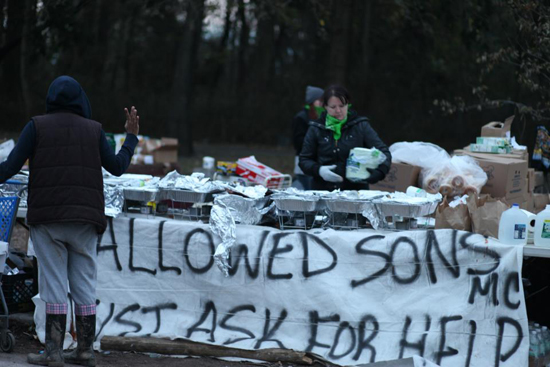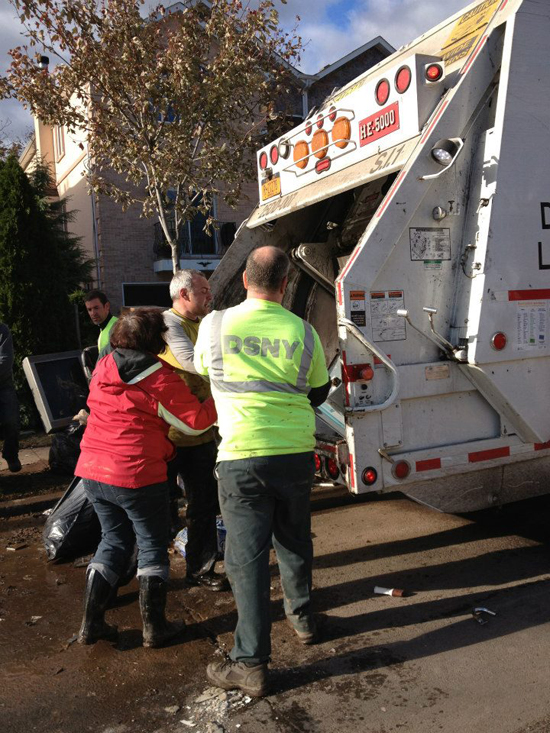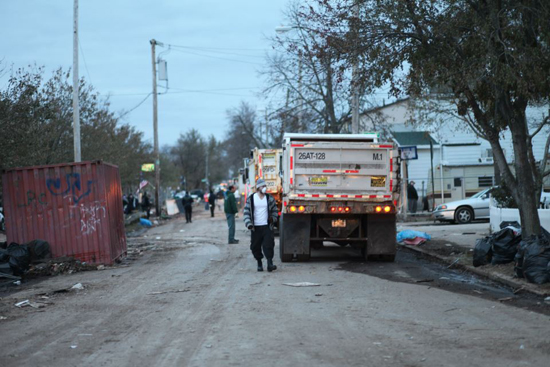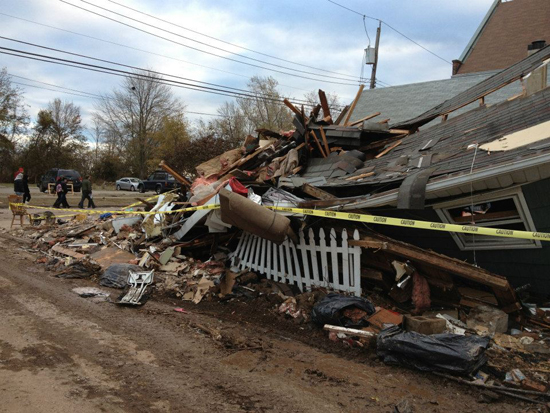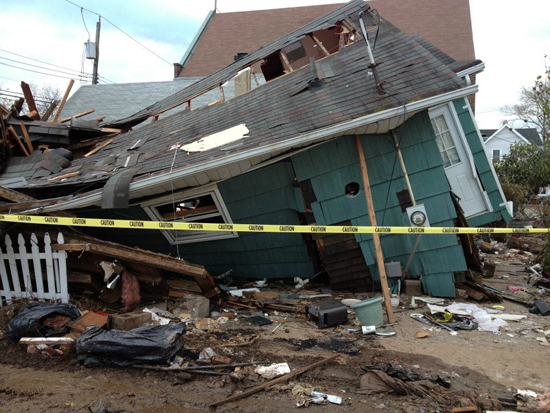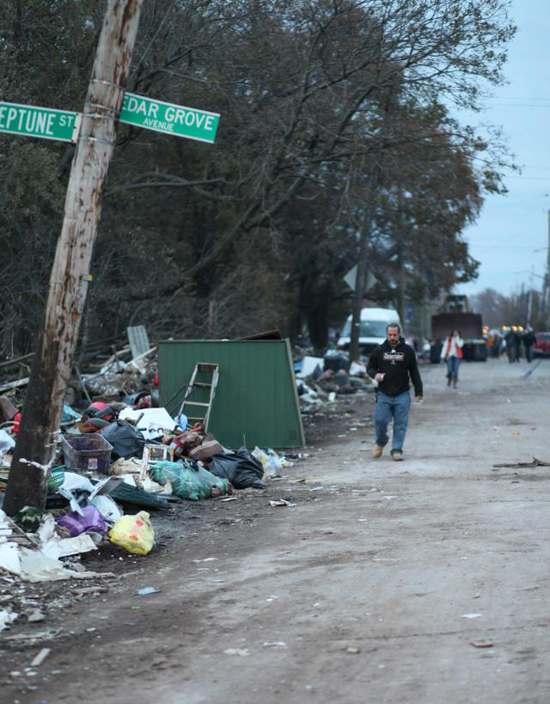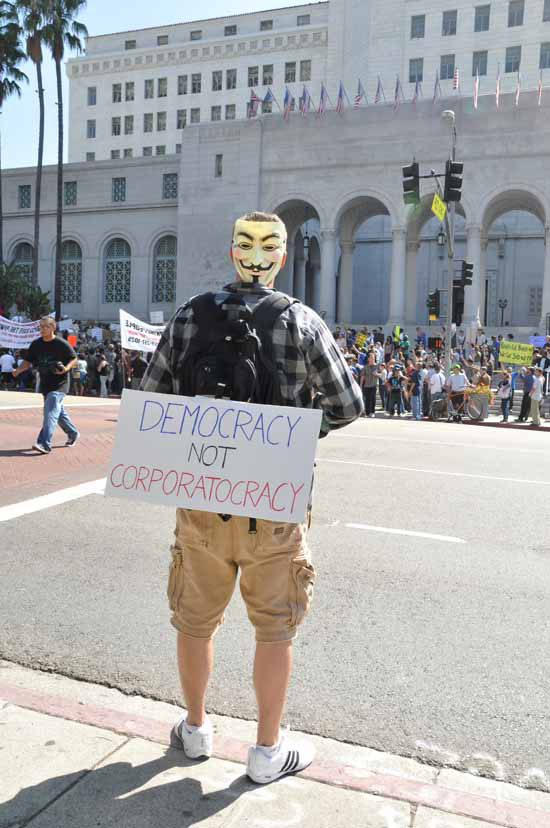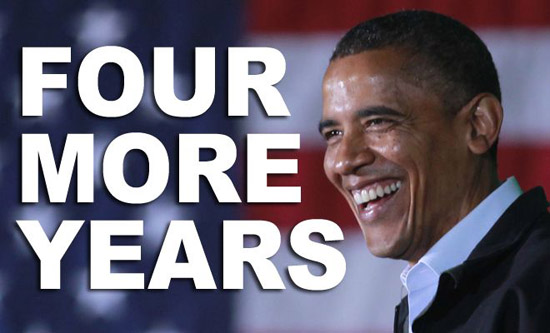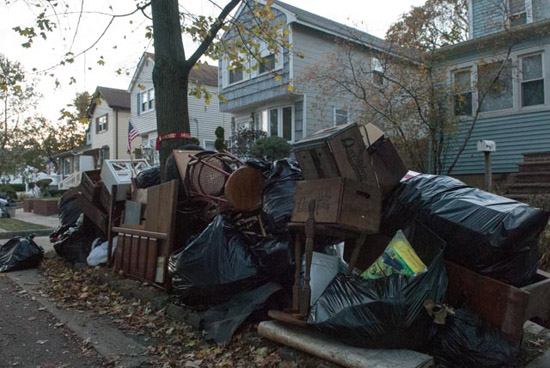
by Joanne Stocker, Kenneth Lipp and Dustin Slaughter
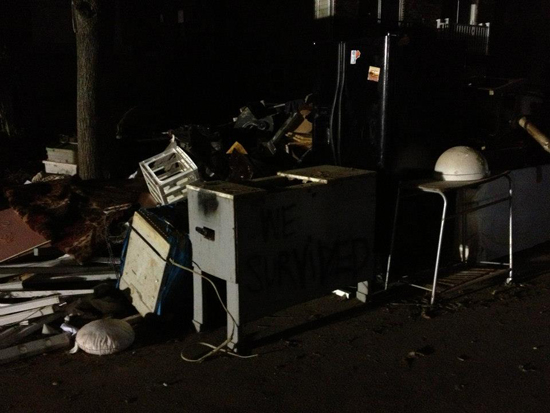
The baseball field behind Egbert Middle School is pitch black as our journalist team, led by Liam (who prefers his last name not be used), a Staten Island resident who swam flood waters to rescue neighbors as the nearby ocean swallowed his community, walk down an unlit street strewn with the detritus of Hurricane Sandy’s watery rage. Liam wants to show us what the neighborhood has been abuzz over: the site of what was a makeshift morgue, in the hopes that we might challenge what many here in Midland Beach see as an official orchestrated attempt to downplay Sandy’s death toll.
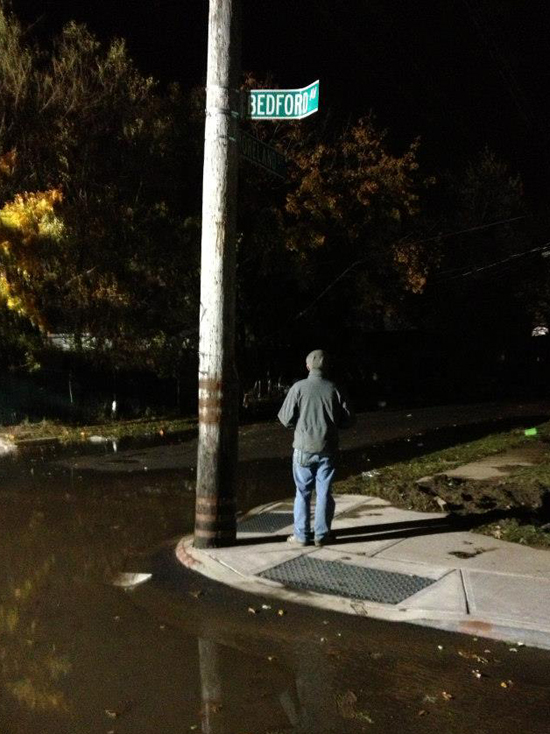
Midland Beach, a tight-knit working class neighborhood on the Island, has largely been washed away. What remains are uninhabitable homes and harsh utility floodlights that pierce the inky darkness to discourage looters, as unmarked police cars patrol the shells of former neighborhoods.
It is the closest to Hell any of us have ever been.
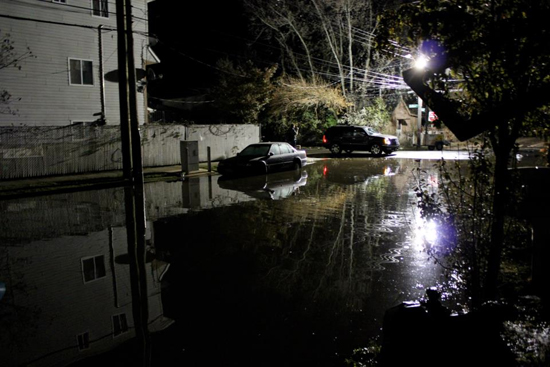
“It was in here,” he says as he beckons us to enter.
Taking just a few steps yields the stench of death. Like this smell, the truth of what happened here isn’t easily dismissed.
As with any story that spreads through a tight-knit community, especially in a disaster, there are inconsistencies and friends-of-friends third and fourth-hand accounts to rely on. Some say the flood victims, which rumor has it are to be found within the school, broke into the premises to seek shelter from the rising waters or the cold, only to meet with tragedy. Others claim that the bodies were found elsewhere and the school was used because the nearby Staten Island University Hospital’s morgue, with a capacity of no more than 50, could not handle the intake.
Rumors are natural, but this isn’t sensational gossip.

Earlier in the day, a New York City Housing Authority administrator [name withheld] at the South Beach housing development told us how her friend, a nurse, had been relocated to Midland after her hospital in Manhattan was evacuated. When we inquired specifically about the rumored school-cum-morgues, she said she could confirm that the school had been used as a morgue, and that the actual death toll was much higher. When we tracked down her friend, the nurse, she declined our request for comment. The NYC Housing Authority administrator later recanted her assertion over the phone, after telling us she had gone out to dinner with Staten Island Borough President James Molinaro, and that she now accepted the official death toll of 18. However, the rumor was subsequently corroborated by an Egbert Middle School teacher, who wishes to remain anonymous. When questioned by us, she confirmed that the school wouldn’t open Monday morning because it was being used as a temporary morgue.
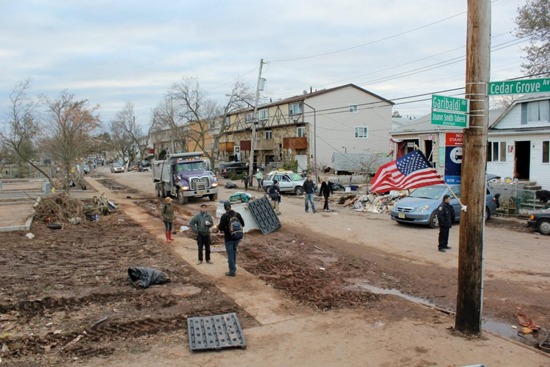
A sanitation worker and Staten Island local, holding his hands to his head in horror upon seeing the destruction on Cedar Grove Avenue for the first time, repeated again and again, “They’re lying,” – he was referring to the death toll. He told us of another New York Department of Sanitation employee, only 22 years old, who was part of a crew that “lifted 50 bodies into a front-end loader” in the Midland neighborhood just a day earlier. Workers from the Sanitation Department were a constant sight as they helped residents clean up debris.

The morgue rumor becomes even more disturbing when one takes into account the behavior of local press, such as the Staten Island Advance. In an early report, the Advance mentions a temporary morgue site off of Bedford and Mason Avenues – Egbert Middle School’s location – yet later Sandy reports in the paper make no mention of this. The Advance offered no retraction, but the makeshift morgue item was there…

And then vanished without explanation.
Contrast the reliable testimonies of Midland Beach residents with the strange behavior of the local press and adamant denials from local officials [see official statement] and one begins to see a narrative emerge: Regardless of whether Egbert Middle School was or is still being used as a makeshift morgue, the death toll in this forgotten borough that is a casualty of political expediency is likely much higher than officials would like the public to know.
We return the following day to volunteer where needed and talk to the people who call Midland Beach their home. It is the day of what was to be the 2012 New York Marathon.
“This is all Staten Island is to them – a starting line and a dump,” Chris Rich, a Staten Island firefighter tells us as he cleans up debris and mud from his gutted house. Throughout his neighborhood today, New York City marathon runners prance through decimated streets, leaping over piles of donations yet to be distributed, bringing severe congestion to a community just beginning to regain its senses after the catastrophe. To place it in even sharper relief, according to Rich, it was only that very morning that authorities had gotten around to removing three bodies floating in Bay Street Marina. One was tied to a pier to avoid it washing down shore. The person who reported the bodies was told that they would be left for the time being as efforts were to be exclusively “rescue” oriented, eschewing “recovery.” While the Staten Islanders were, and are, still counting their dead, they felt as if they were expected to indulge catastrophe tourism.

“These aren’t Christmas lights,” Rich says, appalled by runners and the attendant onlookers taking in the destruction and pausing for photographs with shell-shocked locals. “People are looking for their wedding rings…These people should be shot,” he says, referring to the vast number of runners who arrived on the island to jog the marathon despite its cancellation.
The ultimate cancellation of the New York City Marathon on Sunday, which would have started on the Island, was an empty political gesture. Michael Bloomberg, NY’s billionaire Mayor, had fought tooth and nail to satiate corporate sponsors and have the Marathon commence on time. He was forced to cancel at the eleventh hour, not out of respect for the suffering of locals or for prudent administrative reasons, but because the public outcry over the issue forced his hand.
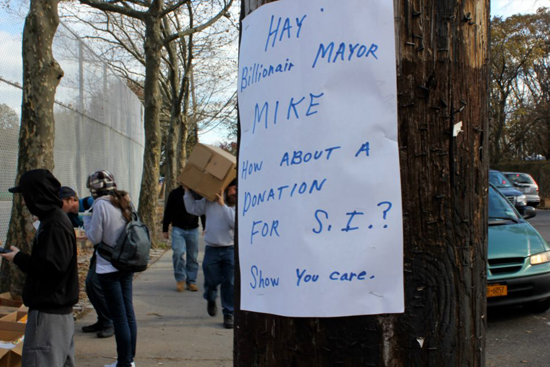
Time and time again, we speak to residents who are disgusted by the marathon runners, who seemingly use the Islanders’ misery as a photo opportunity. Yet his decision to return at least two generators slated for use during the marathon to New Jersey once the event was canceled was the last straw for Rich. It is widely reported that these generators could have powered 400 homes – something Staten Islanders desperately need. Already their walls and floors are spawning mold and creating hazardous conditions that will likely render their homes permanently uninhabitable.
It is a cruel sort of political maneuvering. Residents in and around Midland Beach are left to fend for themselves as the Red Cross – as of last weekend – were still rejecting volunteers. Meanwhile FEMA was merely handing out business cards on Friday as they distributed food that could barely nourish families of two or more. We would later learn that fully-furnished, non-toxic FEMA trailers – at the time of this article’s publication – sit less than two hours away in a Wilkes Barre, PA lot.

One local nurse, employed by Columbia University, was denied an opportunity to volunteer by the Red Cross, ostensibly because she, an educated professional, could pose an insurance liability. “People are going to die out there tonight,” she said. When she tried to drive supplies over the Verrazano bridge, she was ID’d and then denied entry.
There is more, however, that sheds light on Bloomberg’s disconnected and cruel countenance upon those in whom he does not see a personal economic or political interest. A borough firefighter who prefers to remain nameless relates the story of how two nights ago the mayor personally ordered police at the 122 Precinct to either arrest or otherwise disperse volunteers who refused to cease relief efforts on Father Capodanno Boulevard, which runs close to the Lower Bay and was slammed by Hurricane Sandy. We ask him what he thinks the mayor’s motive is for doing so: “They [Bloomberg and his administration] didn’t want cameras coming down here and seeing people helping people, they wanted it to look like FEMA or the Red Cross was helping. The fact of the matter is, it’s not. Down here, it’s people helping people,” he says.
The 122 Precinct commander refused to obey Bloomberg’s order, instead ushering people off of the street and into a parking lot, away from any network news cameras. The consistent answer from Staten Islanders to Bloomberg’s misprision was a defiant self-sufficiency and tirelessly persistent community-mindedness.
It was clear that the only ones willing to be responsible for helping Staten Island would be its inhabitants. Local groups such as the Hallowed Sons, a collective of former firefighters and police officers, were seen on Cedar Grove Avenue, in the nearby town New Dorp, giving out hot meals. They were also organizing roving bands of teenagers, who, armed with dust masks and shovels, were helping gut uninhabitable basements and garages.

In Midland Beach, we come across Kelly, who arrived from Boston with a raft and shovels to help his uncle Mike save his home. After just four days, the garage was beginning to mold. Mike’s wheelchair-bound neighbor had died in the flood, despite the best efforts of those trying to rescue him. One of Mike’s daughters was out delivering supplies to others who, in their words, had it much worse.
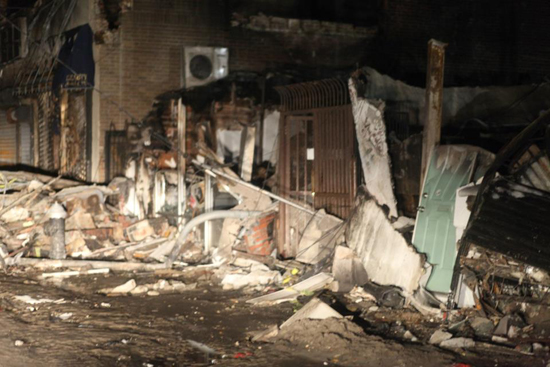
Kelly offers to put us up for the night. “We have a generator and heat,” he says, as the men pass beer around. Their hospitality and determination is characteristic of Island residents. “Come back in a year, you’ll see a new house!”
Images: Dustin Slaughter, Kenneth Lipp, Joanne Stocker, Joe Fionda and Lex Hortensia
